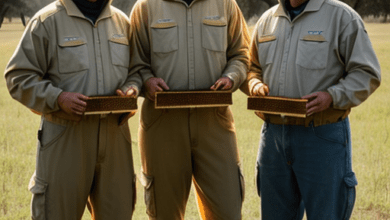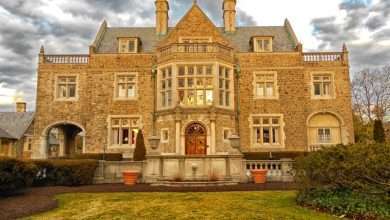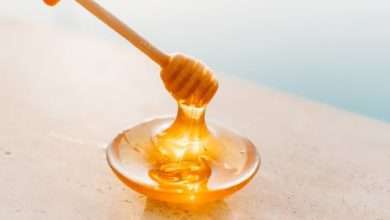Bee Garden Flowers: Creating a Haven for Pollinators
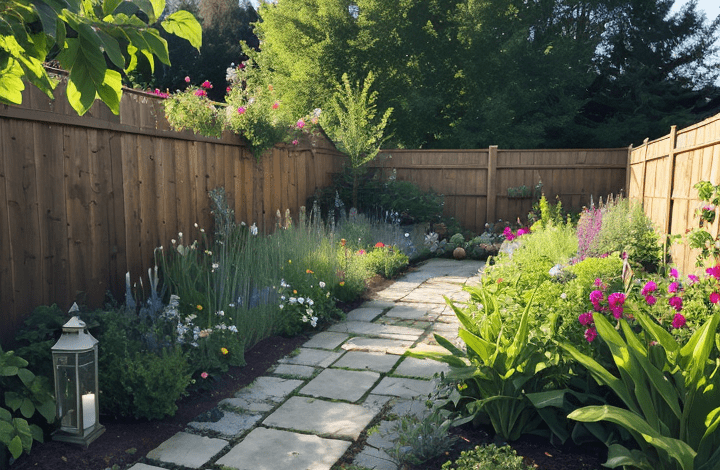
Chapter 3: Bee Garden Flowers: Creating a Haven for Pollinators
In this article, we will delve into the importance of bee gardens and the benefits of planting bee-friendly flowers. Additionally, we will explore how bee gardens contribute to creating a sustainable ecosystem. So, grab your gardening tools and let’s get started!
The Importance of Bee Gardens
Bee gardens play a vital role in supporting the health and well-being of our precious pollinators. By creating a garden specifically tailored to attract and sustain bees, you are actively contributing to the conservation of these essential insects.
Here are a few key reasons why bee gardens are crucial:
- Pollination Powerhouses: Bees are the primary pollinators of a vast number of flowering plants, including fruits, vegetables, and nuts. They help transfer pollen from the male to the female parts of flowers, enabling plants to reproduce and bear fruit.
- Biodiversity Boosters: Bee gardens encourage biodiversity by providing a diverse range of nectar and pollen sources. This ensures a continuous food supply for bees, enabling them to thrive and support a healthy ecosystem.
- Conservation Champions: With bee populations facing numerous threats such as habitat loss, pesticide exposure, and climate change, bee gardens serve as sanctuaries for these valuable insects. By creating a suitable habitat through your garden, you contribute to their conservation.
Benefits of Planting Bee-Friendly Flowers
Now that we understand the importance of bee gardens, let’s explore the benefits of planting bee-friendly flowers within these gardens:
- Enhanced Pollination: Planting bee-friendly flowers attracts bees to your garden, leading to increased pollination rates. This, in turn, can boost the productivity and yield of your flowering plants, fruits, and vegetables. A win-win situation for both bees and gardeners!
- Beauty with Purpose: Bee-friendly flowers are known for their vibrant colors, enticing fragrances, and unique shapes. By incorporating these blooms into your garden, you create a visually stunning landscape while providing bees with a source of nutrition.
- Extended Blooming Seasons: A well-planned bee garden consists of flowers that bloom at different times throughout the year. By carefully selecting a variety of plants, your garden will provide a continuous food supply, supporting bees even during periods when other food sources may be scarce.
Creating a Sustainable Ecosystem
Creating a sustainable ecosystem is a fundamental objective of every bee garden enthusiast. Here’s how bee gardens contribute to achieving this:
- Natural Pest Control: Many bee-friendly flowers have properties that naturally repel pests, reducing the need for harmful pesticides. This helps maintain a balanced ecosystem by minimizing the negative impact on other insects, birds, and animals.
- Soil Health and Nutrient Cycling: Bee gardens with a diverse range of plants enhance soil health by promoting beneficial microbial activity. Bees visiting the flowers also carry pollen, which contributes to nutrient cycling and fosters a fertile environment for other plants to thrive.
- Educational Opportunities: Bee gardens provide a wonderful educational experience for children and adults alike. By observing bees up close, learning about their life cycles, and understanding their crucial role in pollination, we foster a deeper appreciation for nature and encourage environmental stewardship.
As you embark on the journey of creating your own bee garden, remember the importance of bee-friendly flowers, the benefits they bring, and the role your garden plays in nurturing a sustainable ecosystem.

Choosing the Right Flowers to Create a Haven for Pollinators
A garden filled with vibrant flowers not only adds beauty to your surroundings but also serves as a sanctuary for our precious pollinators. By carefully selecting the right flowers, you can create a haven that attracts and supports bees, butterflies, and other essential pollinating insects.
- Native plants
When planning your bee garden, prioritize native plants over exotic species. Native plants have coevolved with local pollinators and are better suited to meet their specific needs. These plants offer an abundant supply of nectar, pollen, and habitat, making them highly attractive to bees and other pollinators.
By incorporating native plants, you not only support the local ecosystem but also ensure a successful and thriving bee garden.
- Variety of colors and shapes
To entice a diverse range of pollinators, it’s essential to choose flowers in a variety of colors and shapes. Different pollinators are attracted to different colors, so having a rainbow of blooms will increase your garden’s allure.
Additionally, select flowers with varied shapes, such as tubular, flat, or clustered, to accommodate the differing preferences of various bee species and butterflies. By offering a diverse selection of flowers, you provide an inclusive haven for a multitude of pollinators.
- Long blooming season
Pollinators rely on a consistent food source throughout their active season, so aim to have flowers that bloom at different times of the year.
By selecting early spring, summer, and fall blooming flowers, you provide a continuous supply of nourishment for pollinators, enabling their survival and aiding in the pollination of your surrounding plant life.
Ensure your bee garden remains vibrant and inviting year-round by incorporating a variety of blooms that span multiple seasons.
- Single-petal flowers
While double-petal flowers may be visually stunning, they often lack the nectar and pollen resources essential for pollinators. Opt for single-petal flowers instead, as they offer easier access to their reward, making them more appealing to bees and butterflies.
Single-petal flowers also provide a larger landing platform and are generally more durable, making them better suited for supporting visiting pollinators.
- Avoiding pesticides
Pesticides, including insecticides and herbicides, can have devastating effects on pollinators. Even small amounts of these chemicals can harm or kill bees, butterflies, and other beneficial insects.
To safeguard the health of your pollinator community, choose organic gardening practices and avoid using any pesticides in your bee garden. Instead, embrace natural pest control methods and create a balanced ecosystem that encourages beneficial insects to thrive.
Top Bee-Friendly Flowers
Introduction
Here, are some of the top bee-friendly flowers that can attract and support bees in their quest for nectar and pollen.
- Lavender
Lavender, known for its captivating fragrance and stunning purple blossoms, is not only a favorite among gardeners but also bees. Bees are particularly drawn to its sweet nectar and can spend hours happily buzzing from one lavender bloom to another. This aromatic herb is highly beneficial for bees due to its extended blooming period, which stretches over several months during the spring and summer seasons.
Planting lavender in your garden provides a reliable source of food for bees and contributes to the overall health of their colonies.
- Sunflowers
Sunflowers with their towering stalks and vibrant golden petals are not only a visual delight but also a beacon for bees. Their large flower heads produce abundant pollen and nectar, making them a favorite among both honeybees and native bees. The bright yellow color of sunflowers acts as a cue for bees, attracting them from afar.
Additionally, the unique structure of sunflower blossoms makes it easier for bees to access the nectar, ensuring mutual benefit for both the plants and the bees.
- Coneflowers
Coneflowers, also known as Echinacea, are a popular choice for gardeners who aim to create a bee-friendly environment. Their bold and colorful daisy-like flowers offer nectar and pollen throughout the summer, attracting various bee species.
Bees find it easy to land on the broad petals of coneflowers, enabling them to access the rich nectar hidden within the cone-shaped center.
By cultivating these beautiful flowers, you can provide a nutritious buffet for bees while adding a splash of vibrant hues to your garden.
- Bee Balm
True to its name, bee balm, or Monarda, is a magnet for bees and other pollinators. This perennial plant produces tubular-shaped flowers in shades of pink, purple, and red, which are highly appealing to bees.
The unique shape of the flowers makes them a perfect fit for bees with long tongues, allowing them to access the nectar deep within the blossoms. The presence of bee balm in your garden not only supports bees but also attracts butterflies and hummingbirds, creating a lively and diverse ecosystem.
- Black-eyed Susans
Black-eyed Susans, commonly found in meadows and prairies, are a favorite among bees due to their bright yellow petals and dark brown centers. These cheerful flowers provide nectar and pollen during the summer and early fall when other flowering plants may be scarce.
Bees are particularly drawn to the contrast of colors in black-eyed Susans, making it easier for them to locate the flowers and collect the essential resources they need to thrive.
By incorporating these attractive blooms into your garden, you can contribute to the overall well-being of bees and other pollinators.
Planting and Caring for Bee Gardens
Now, we will explore the essential aspects of planting and caring for bee gardens.
– Sunlight and Soil
- Bees thrive in areas with plenty of sunlight, so it’s crucial to select a location for your bee garden that receives at least six hours of direct sunlight each day.
- Good soil drainage is essential to prevent waterlogging, which can be damaging to plants and bees alike. Ensure that the soil is well-draining to promote healthy root development.
– Watering and Fertilizing
- Bees need a constant supply of water, especially during hotter months, so provide a water source in your garden. This can be as simple as a shallow dish with pebbles for bees to land on and access the water.
- Avoid using chemical fertilizers in your bee garden, as they can be harmful to bees. Instead, focus on enriching the soil with organic matter such as well-rotted compost or aged manure, which will provide necessary nutrients for the plants.
– Attracting Other Pollinators
- While focusing on attracting bees, it’s important to create an environment that attracts other pollinators as well. Butterflies, hummingbirds, and various types of bees can all work together to enhance pollination.
- Incorporate a diverse range of flowering plants with different colors, shapes, and bloom times to attract a wide array of pollinators. Native plants are particularly favored by pollinators as they have co-evolved with them.
– Maintenance and Weeding
- Regular maintenance, including weeding, is essential to keep your bee garden healthy. Weeds not only compete with your plants for nutrients but can also harbor pests that may damage or kill your flowers.
- Hand-pulling weeds or using organic mulch can help suppress unwanted growth and maintain the health of your plants without the need for harmful herbicides.
By implementing these key aspects of planting and caring for bee gardens, you can play an active role in supporting bee populations and promoting a thriving ecosystem. Remember, a healthy bee garden goes beyond providing attractive flowers but includes creating optimal environmental conditions for bees to flourish.
Conclusion
Establishing a bee garden filled with vibrant and bee-friendly flowers is an intriguing and rewarding endeavor. Not only do these gardens provide a safe haven for pollinators, but they also play a vital role in maintaining a sustainable ecosystem. By selecting the right flowers and dedicating proper care to our gardens, we can ensure a thriving environment for the well-being of bees and the countless benefits they bring.
The significance of bee gardens cannot be overstated. As pollinators, bees contribute to the production of approximately one-third of the world’s food supply. By planting bee-friendly flowers, we are actively supporting these essential creatures in their tireless efforts to pollinate and ensure the continuation of our crops.
Moreover, the benefits of cultivating such gardens extend beyond just aiding bees. Bee gardens attract a plethora of other beneficial insects, creating a harmonious ecosystem that naturally controls pests. This eliminates the need for harmful pesticides and fosters a healthier and more sustainable environment for all.
To create an ideal haven for pollinators, it is crucial to choose the right flowers. Opt for native or wildflower species as they provide ample nectar and pollen sources, perfectly suited to the preferences and needs of bees. Offering a diverse selection of flowers, blooming throughout the seasons, ensures a continuous food source for the buzzing visitors.
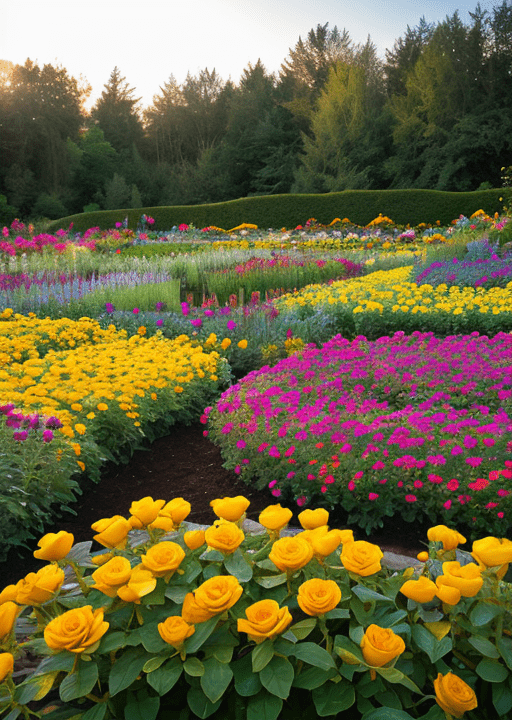
Planting and caring for your bee garden requires dedication, but the rewards are abundant. Proper soil preparation, strategic planting, and diligent maintenance are key factors in supporting a flourishing garden. Regularly providing water sources, avoiding chemical fertilizers and pesticides, and ensuring adequate sun exposure are essential steps in keeping your garden a welcoming oasis for bees.
FAQ’s:
Why are bee gardens important?
- Bee gardens are important for supporting the health of bee populations and promoting biodiversity. By creating a habitat with a variety of bee-friendly flowers, we can ensure a sustainable ecosystem that benefits both bees and other pollinators.
What are some top bee-friendly flowers to include in a bee garden?
- Top bee-friendly flowers include lavender, sunflowers, coneflowers, bee balm, and black-eyed Susans. These flowers provide abundant nectar and pollen, making them highly attractive to bees.
How do Bee Garden Flowers benefit bees?
- The flowers included in Bee Garden Flowers are specifically chosen for their attractive nectar and pollen qualities, serving as a reliable food source for bees. By planting these flowers, you not only create a welcoming habitat but also aid in the bee’s survival and reproductive success.
Can Bee Garden Flowers be planted in any location?
- Most of the flowers in the Bee Garden Flowers collection thrive in full sun to partial shade conditions. It’s essential to assess your location’s sunlight exposure and choose a spot that receives at least 4-6 hours of direct sunlight per day. Some flowers may also have specific soil or climate preferences, so paying attention to these requirements is crucial for successful growth.
How do I prepare the soil before planting Bee Garden Flowers?
- Preparing the soil before planting is essential for optimal growth. It’s recommended to loosen the soil, remove any weeds or grass, and amend it with organic matter such as compost or well-rotted manure. This helps improve soil structure, drainage, and fertility, creating a healthier environment for your Bee Garden Flowers.
Can Bee Garden Flowers be grown in containers?
- Yes, many of the flowers in the collection can be successfully grown in containers, as long as they are of sufficient size to accommodate their root systems. Make sure the containers have proper drainage holes, use well-draining potting soil, and provide adequate watering and sunlight to ensure their healthy growth.
Will Bee Garden Flowers attract unwanted pests?
- While the primary goal of Bee Garden Flowers is to attract pollinators like bees, it’s possible that other insects may also visit the flowers. However, the presence of these insects is often beneficial, as they contribute to the overall biodiversity of the garden.
- Additionally, the bees attracted to the flowers may also help deter certain pest insects by pollinating nearby plants.
Can I combine Bee Garden Flowers with other flowering plants in my garden?
- Absolutely! In fact, incorporating Bee Garden Flowers into an existing garden can help enhance the overall pollinator activity in the area. Bees are known to be attracted to a diverse range of flowers, so the more variety you provide, the better. Just make sure to choose other plants that are compatible in terms of sunlight, soil, and watering requirements for optimal results.

